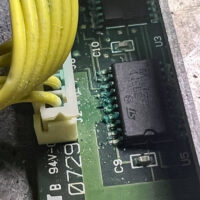Designing and building equipment for aquaculture means I use controllers. Quite a few controllers, dozens upon dozens of them, little boxes meant to keep some parameter in range. Temperature, pH, water level, whatever, a little box with a display, a few buttons, and a relay in the back to turn something on when needed to control the outcome.
Industrial suppliers will sell you a controller for just about anything, there are catalogs full of them, from inexpensive to thousands of dollars you can buy the solution to your needs. Buy one, wire it in, adjust a few setpoints and you have everything under control.
Enter the STC-1000, a little cheap temperature controller found on eBay, Amazon, everywhere. It comes in a bunch of different versions, need readout in Farenheight or Centigrade? No problem. I have no idea who makes it, some asian factory somewhere. It is available in a hundred different brand names from hundreds of different sellers for somewhere between $12 and $25, all absolutely identical as far I as can tell.
The STC-1000 is cheap. Cheap enough that I am somewhat suspect of their reliability. I do not buy them for production line bioreactors and grow tanks, places where I cannot trust a cheap controller with a few thousand dollars worth of product. For critical uses I buy full industrial rated temperature controllers from a reputable supplier for around $100 each.
But for experimental setups? Temporary research hacks built with more limited budgets? There are a couple dozen of these STC-1000 controllers around the place. They are easy to use with simple configurations, seem to be accurate holding calibration, and I have not had one fail yet.
So how do you sell a device like this for about $15?
Time for a little deconstructive analysis…
Continue reading “What is safe?”









